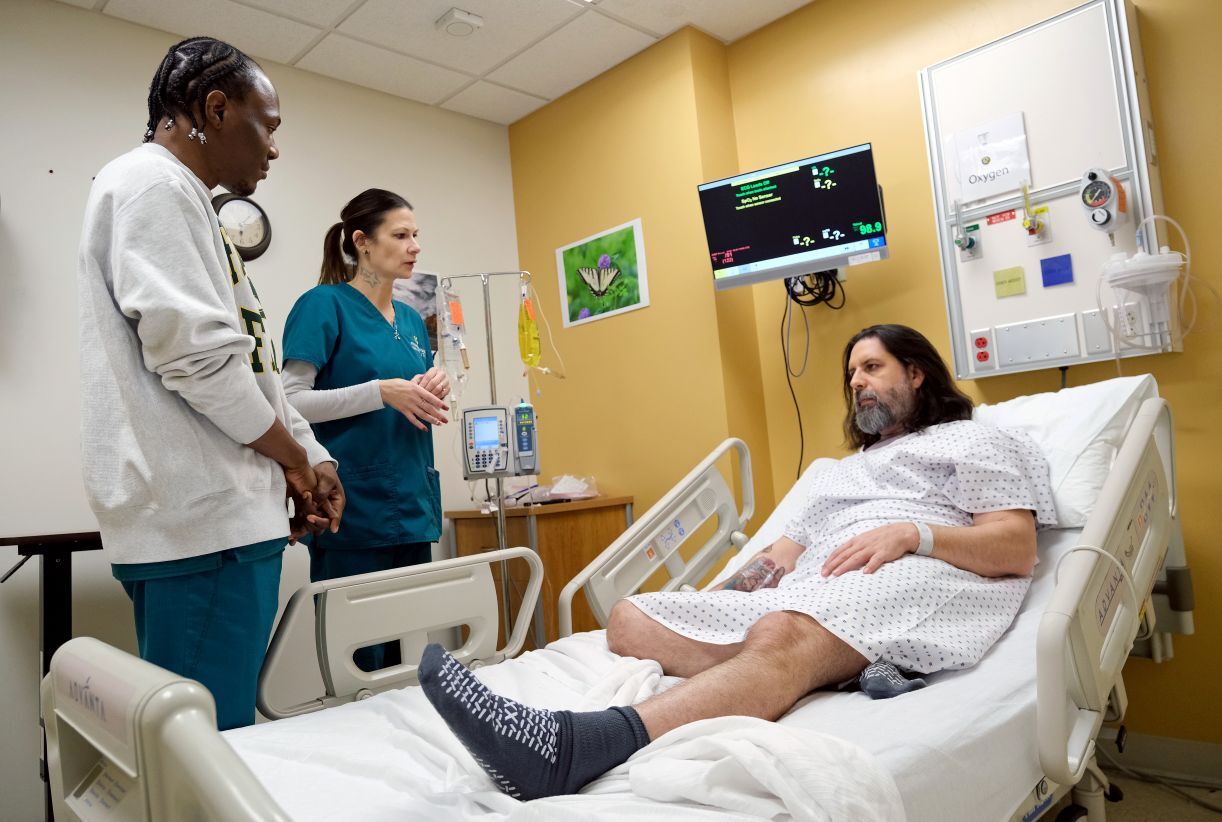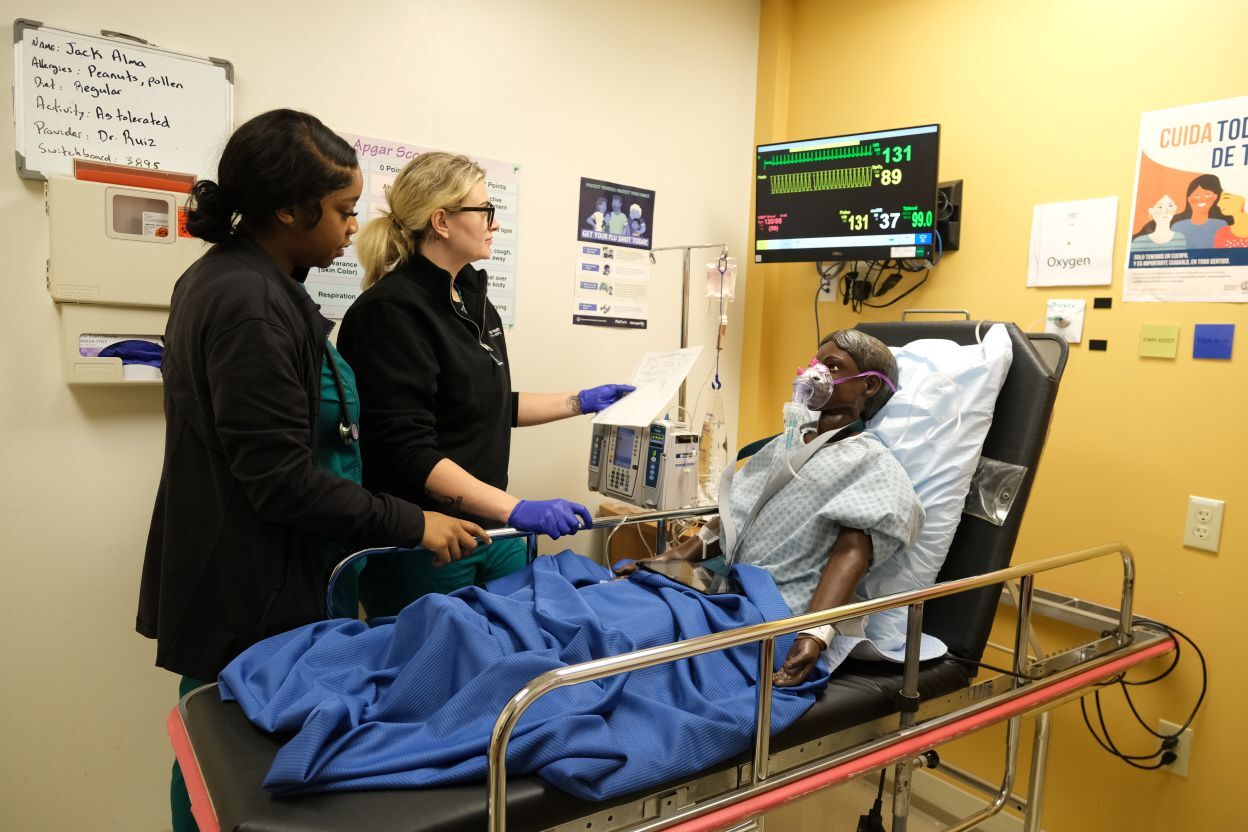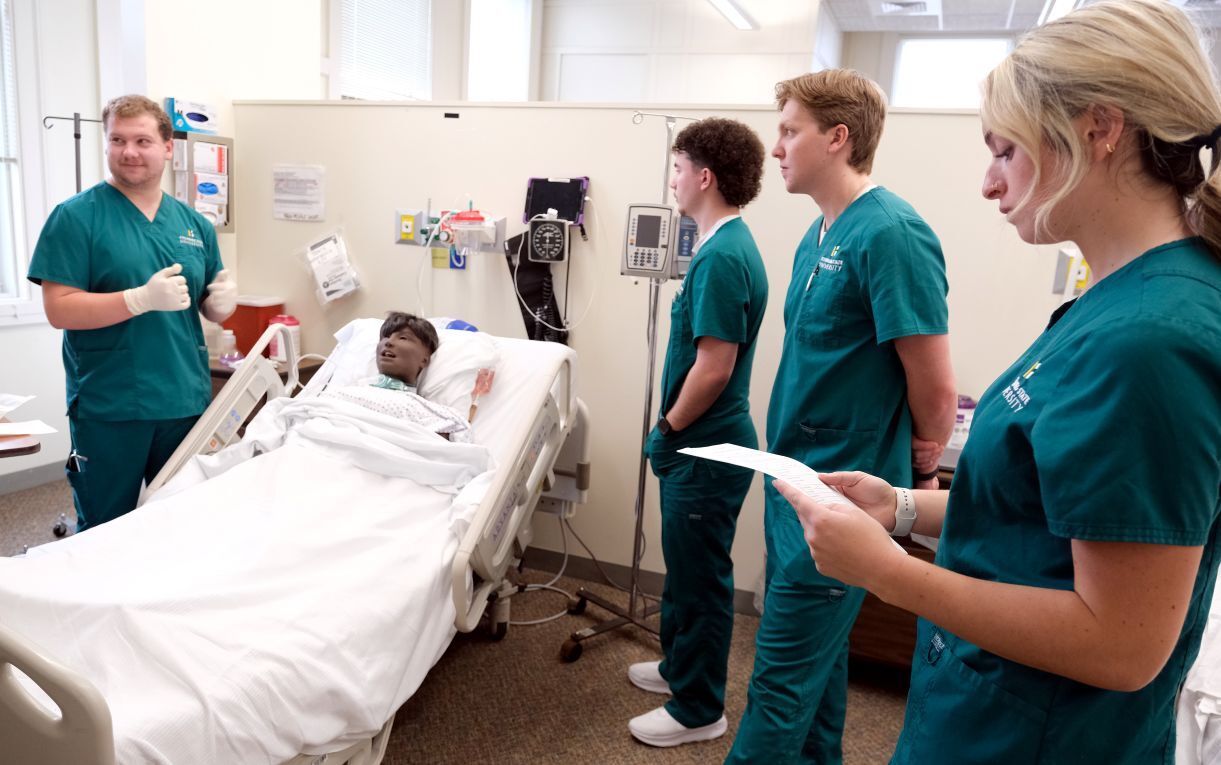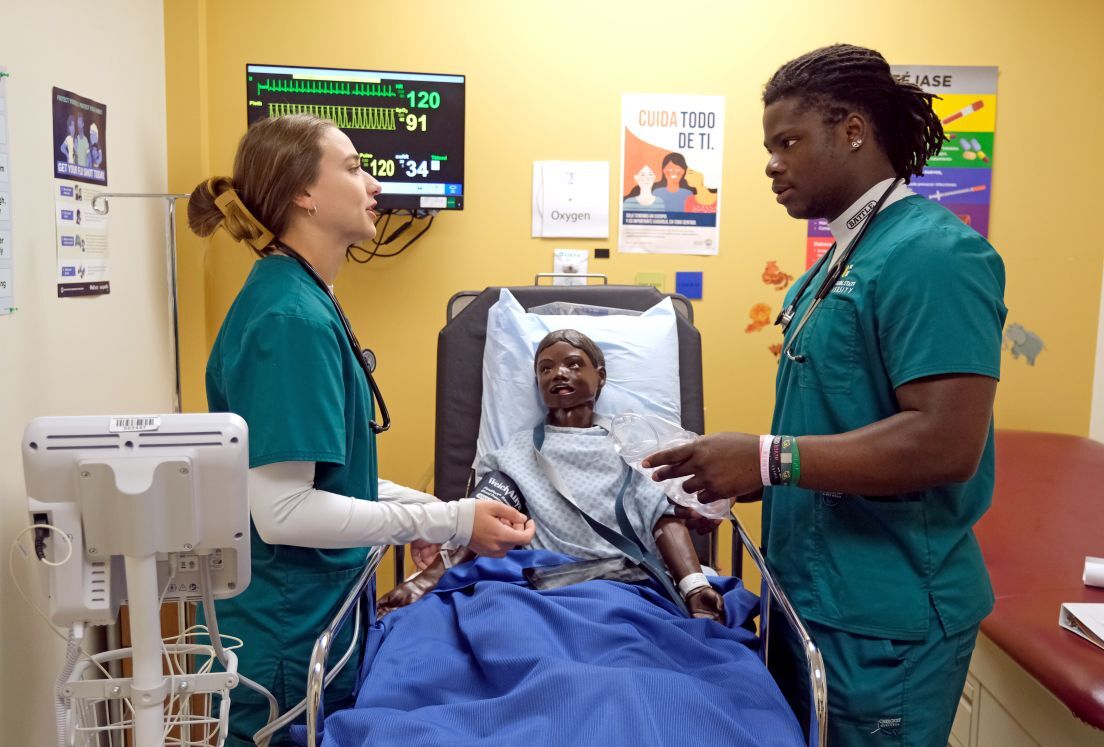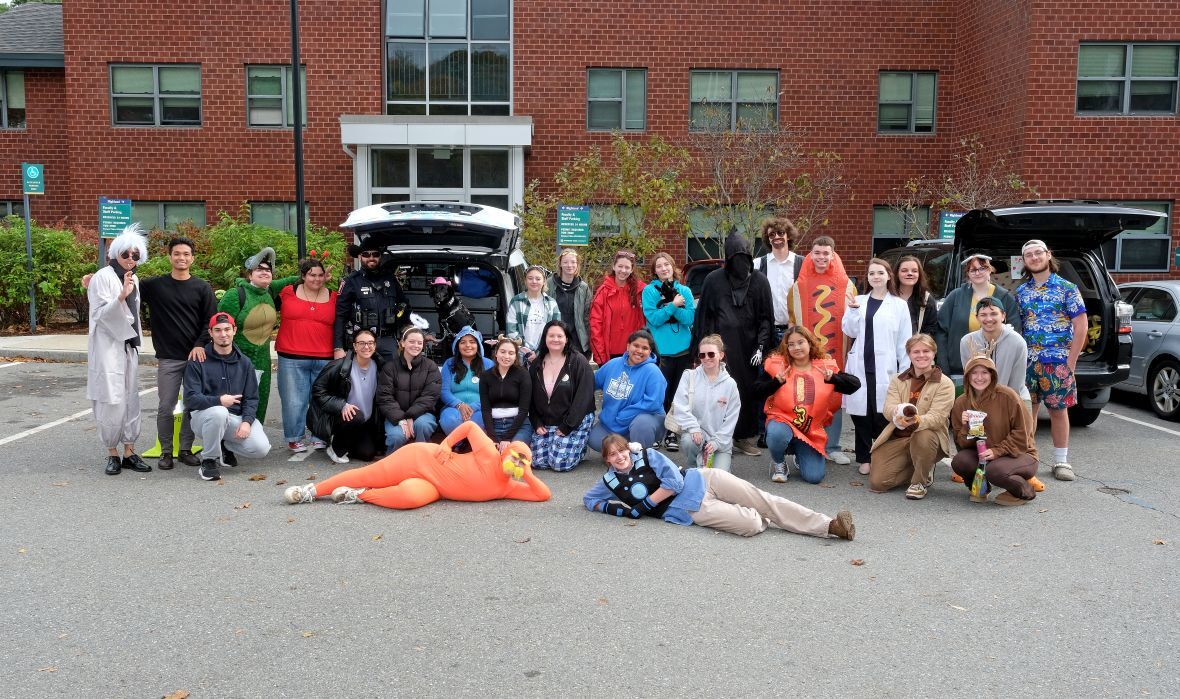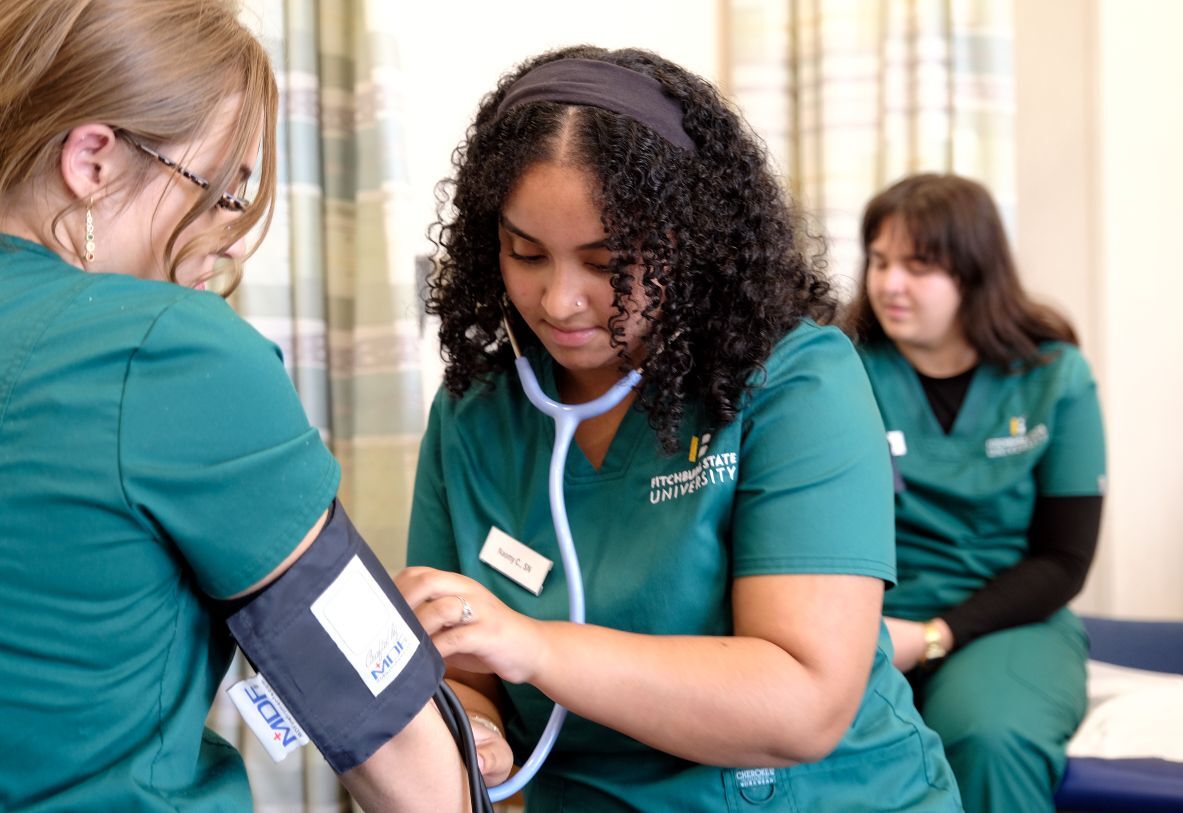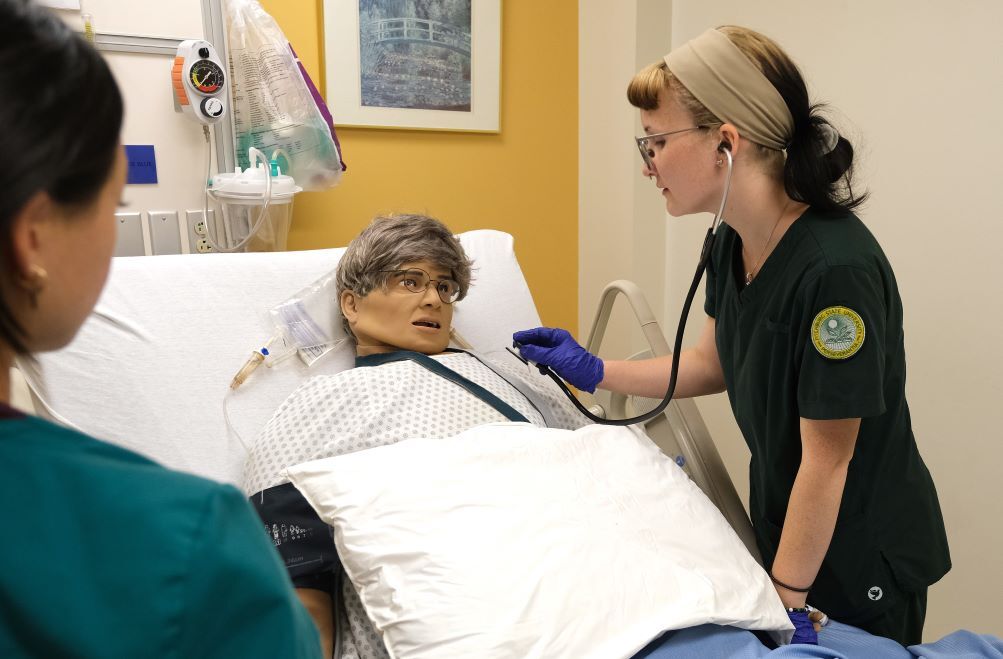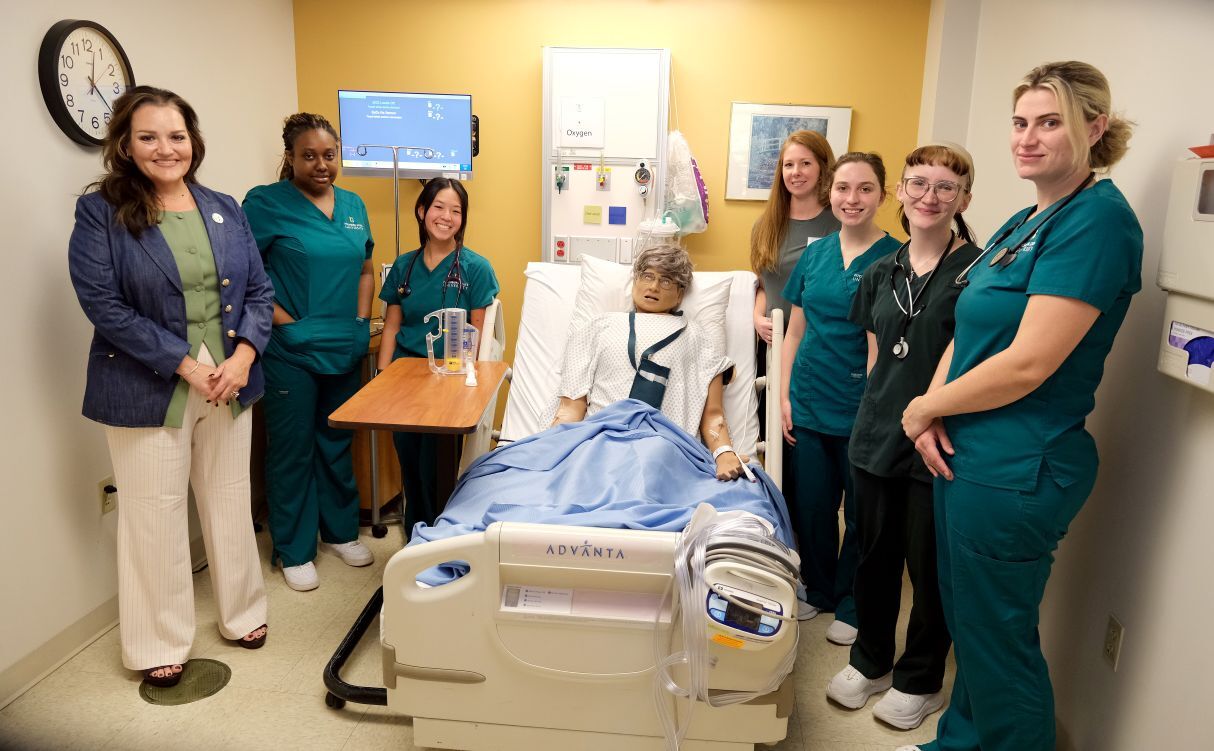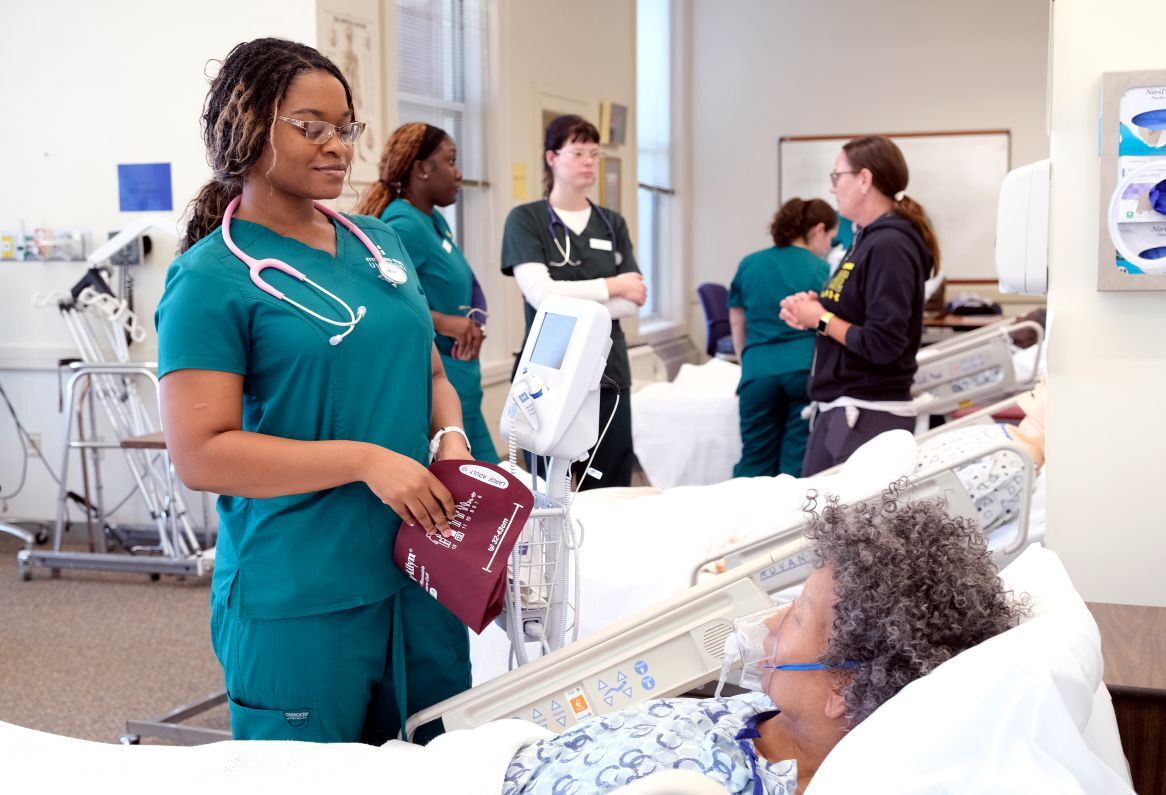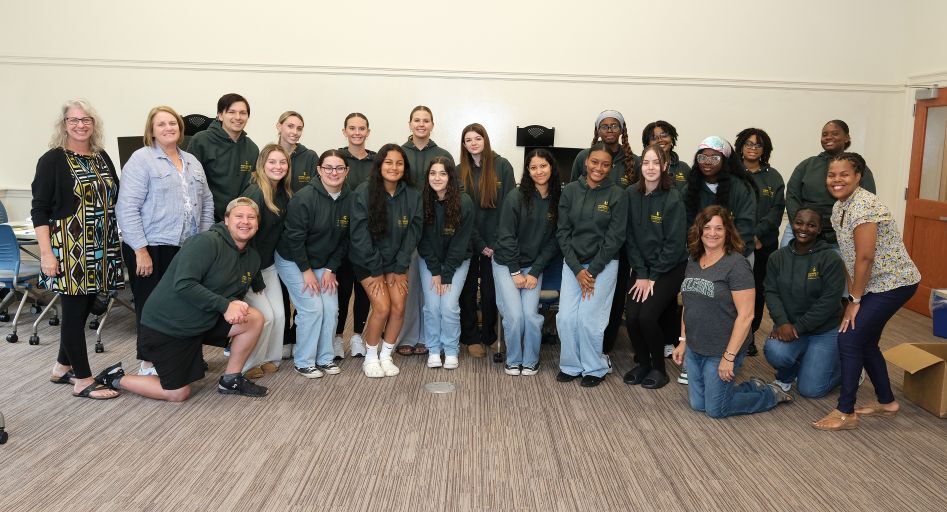On the last day of class for this semester, Nursing Simulation Lab Director Ian Murray reprised the role of James Irons, a recovering alcoholic who may have relapsed and ended up in the hospital. James is remorseful and worried what his family will think. A nursing student plays his daughter in this scenario.
Read More
Topics:
Nursing Program,
Health and Natural Sciences
Our nursing students recently worked through a pediatric patient scenario in our Nursing Simulation Laboratory. The Nursing Simulation Laboratory assists nursing students in learning critical thinking and clinical judgment skills in preparation for their healthcare careers. The “manikins” act as lifelike patient simulators, wherein instructors provide real-time feedback via a control center, giving students as close to real-life simulation as possible. Fellow students watch as their classmates work through the simulation. All students and faculty debrief after the scenario.
Read More
Topics:
Nursing Program,
Health and Natural Sciences
Nursing students learn tracheostomy in their Nursing Foundations Lab. A tracheostomy is a surgical opening in the neck to the windpipe (trachea) to insert a tube, which helps with breathing. In this course, emphasis is placed on professionalism, caring, communication, cultural considerations, spirituality, sexuality and health promoting activities.
Read More
Topics:
Nursing Program,
Health and Natural Sciences
This morning, our nursing students worked through a pediatric patient scenario in our Nursing Simulation Laboratory. The Nursing Simulation Laboratory assists nursing students in learning critical thinking and clinical judgment skills in preparation for their healthcare careers. The “manikins” act as lifelike patient simulators, wherein instructors provide real-time feedback via a control center, giving students as close to real-life simulation as possible. Fellow students watch as their classmates work through the simulation. All students and faculty debrief after the scenario.
Read More
Topics:
Nursing Program,
Health and Natural Sciences
This afternoon the Fitchburg Activities Board (FAB) took over Highland Ave. in front of the Townhouses to celebrate Halloween the FAB way! Fitchburg State University Police therapy dog Zara got in on the action while not to be outdone, our Nursing Simulation Laboratory went all out for the holiday.
Read More
Topics:
Clubs and Organizations,
Greek Life,
Nursing Program,
University Police
Nursing assess the "patient's" health in their Nursing Foundations Lab. In this course, emphasis is placed on professionalism, caring, communication, cultural considerations, spirituality, sexuality and health promoting activities.
Read More
Topics:
Nursing Program,
Health and Natural Sciences
Nursing students worked through a post-operative patient care scenario in our Nursing Simulation Laboratory. Walter should have been wearing his compression boots.
Read More
Topics:
Nursing Program,
Health and Natural Sciences
Nursing Simulation Lab Director Ian Murray, Nursing Department Chair Deborah Benes, and Nursing faculty Heather Wironen gave a tour of our Nursing Simulation Lab. After the tour, President Hodge shared; "That’s why this program matters so much. What I saw in the lab—students practicing with focus and humanity—reminded me that investing in nursing education is not just about the university. It’s about the quality of care every one of us hopes for when we or someone we love needs it most."
Read More
Topics:
Nursing Program,
Health and Natural Sciences,
President
Nursing work through various patient scenarios in their Nursing Foundations Lab. In this course, emphasis is placed on professionalism, caring, communication, cultural considerations, spirituality, sexuality and health promoting activities.
Read More
Topics:
Nursing Program,
Health and Natural Sciences
Our newest Nursing Student cohort in the START STRONG; Your Nursing Journey Begins Here program ended today with tours of our Nursing Foundations and Nursing Simulation Labs. Afterward, Nursing faculty and current students took feedback about this program in its first year, as well as hand out some swag and have a raffle for prizes.
Read More
Topics:
Nursing Program,
Health and Natural Sciences


